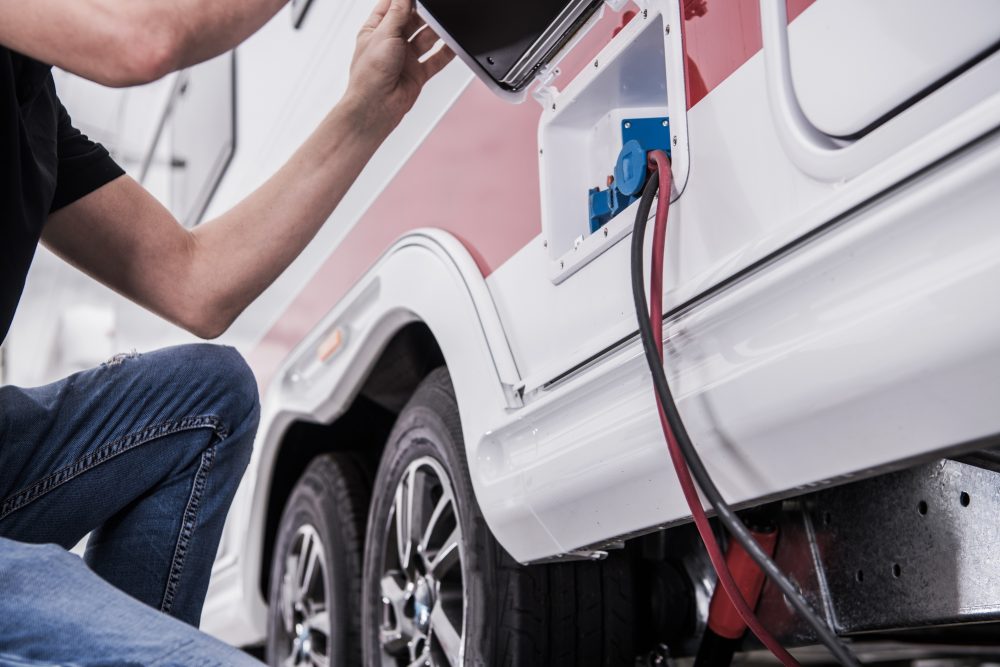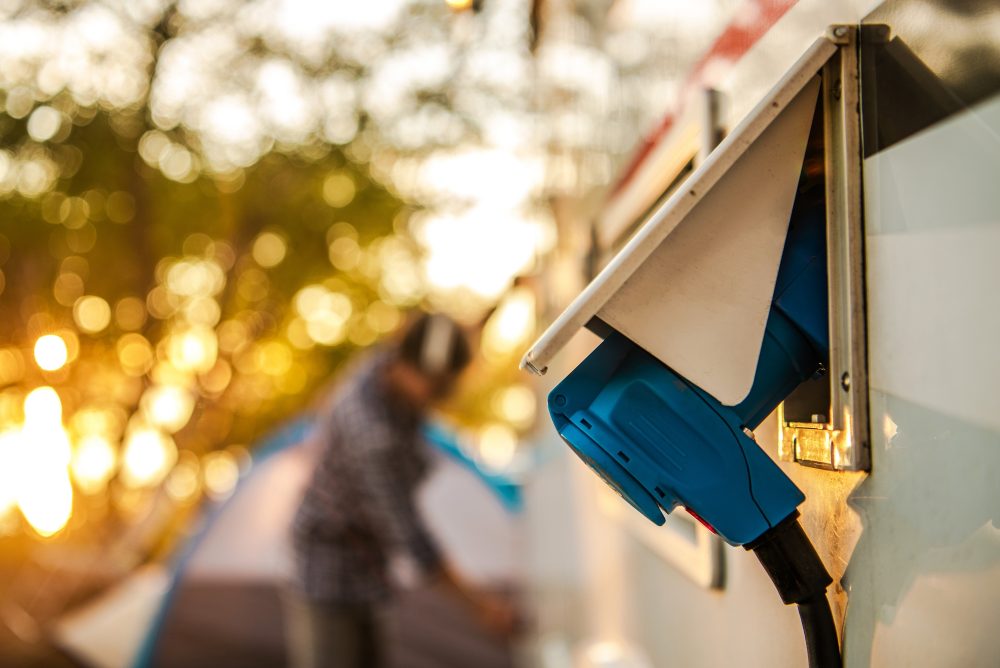Before planning a road trip, it is essential to determine what power supply you have in your rig and how to plug into it. If you plan on traveling with an RV, here’s what you need to know.

Is a 50 Amp RV Plug 110 or 220 V?
A 50 amp RV plug that has four prongs is rated for 40 amps at 120 volts. If your RV plug has five prongs, it is plugged into a 220-volt outlet.
A 50 amp unit with four prongs will draw 40 amps of power at 120 volts to cover the amount of energy it needs to travel in an RV.
The fifth prong on the unit ensures that you have the correct line of power to keep it going. The more energy drawn from a five-prong unit, the larger the conductors must be in size on your extension cord and breaker on your home’s 110-volt outlet.
How Does a 50 amp RV Work?
The 50 amp RV works by providing 50 amps of current to supply power through the hot, neutral, and ground wires. The voltage is split between the two lines, so it’s only getting 25 amps on average between them. Some people refer to these as two 30 amp supplies.
The wire size needed for a 50 amp RV plug is 6 AWG or equivalent size. 6 AWG wire can handle up to 65 amps without any issues. The manufacturer of your RV usually supplies the wire for this reason.
The 50 amp plug provides power to your RV through a NEMA 14-50 or equivalent plug. The NEMA 14-50 is a 50 amp socket with 240 volts. This type of plug is also known as a “30 amp in one leg and 20 amp in the other,” but this isn’t entirely accurate.
How To Plug a 50 amp RV?
There are some voltage rules of the 50 amp RV plug.
The NEMA 14-50 and 10-50 plugs cannot be used in Europe and vice versa.
The NEMA 14-30 plug can be used in any location. However, when traveling outside the U.S., it is recommended that you carry a conversion adapter to be safe. This will allow you to use your existing cord on any 30 amp 220-volt receptacles. It is also the safest way to provide power, as it does not require you to cut or splice your cord.
The first scenario has a 110 volts source (what’s in your garage) and the second scenario has a 220 volts source (what’s at an RV park). Both are 50 amps of power, and both of the AC plugs will work without any issues.
Testing a 50 amp RV Plug
The purpose of testing a 50 amp RV plug without actually plugging it in is so you can determine what kind of power supply you have available. This will allow you to purchase the appropriate cord or adapter for your needs.
This test works on both 50 amp plugs. You can perform the test using a circuit analyzer, plug-in voltmeter, or multi-tester. They can be purchased from your local hardware store.
3 Ways to Plug a 50 amp RV into 220V
-
Using a Power Inverter
Using a power inverter to plug a 50 amp RV into 220V is a simple and inexpensive way to make it work. However, it is not recommended because your RV will only receive half the power from each leg, which means you lose 50% of your available power.
-
Using a Battery
Using a battery to plug a 50 amp RV into 220V is a little more complicated, but it will provide full power from both legs to your RV.
-
Using a Generator
Using a generator to plug a 50 amp RV into 220 V is a great way to provide power. This is the preferred method for most RV owners, because it gives you full power from both legs and provides you with all of your available amperages.

FAQs
How much does it cost to install a 50 amp RV plug?
The price to have an electrician install a 50 amp RV plug typically varies depending on where you live. Typically, expect to pay around $200 for labor and another $100-$150 in materials.
If you need a 50 amp RV plug installed, it’s best to hire a licensed electrician in your area. Doing research and getting quotes from multiple electricians will help you choose the right person for the job.
A good, experienced electrician should be able to handle a task that would require installing or repairing an RV plug without any issues.
How do you store a 50 amp RV plug?
There are many different ways to store a 50 amp RV plug. Most RVs will have a cord holder that can be folded away when not in use, but some people prefer to wind the power cord around their 50 amp RV plug and stow it in a nearby storage compartment for easy access.
How do you use a 50 amp RV plug adaptor?
Step 1: Determine what kind of plug you have on your 50 amp RV. Most RVs use a NEMA 14-50 plug, but some older models will use a Schuko 16 or 16A plug, particularly in Europe. To safely use an adapter between these two plugs, the gender of the outlet and the prongs must be swapped.
Step 2: Purchase an adaptor from Amazon.
Step 3: Plug one end into an outlet and connect the other end to your 50 amp RV plug. To ensure that the connection is safe and secure, it’s a good idea to ensure that all connection points are securely held together.
Step 4: Use your power cord normally once the adapter has been installed. When you’re finished using your RV, remove the adaptor from the wall and store it somewhere out of sight until you need it again.
Which is better — 50 amp or 30 amp plug RV?
50 amp plugs are larger than 30 amp plugs, but this is typically not an issue. The only time it might be challenging to use a 50 amp RV plug is if you need to park your RV in very close quarters. It can also be difficult to get a permit to certain campgrounds that do not have many electric hookups available.
Unless you’re sure that you’ll always be able to find a spot, it’s safer to carry an adapter along with your 50 amp RV plug.




